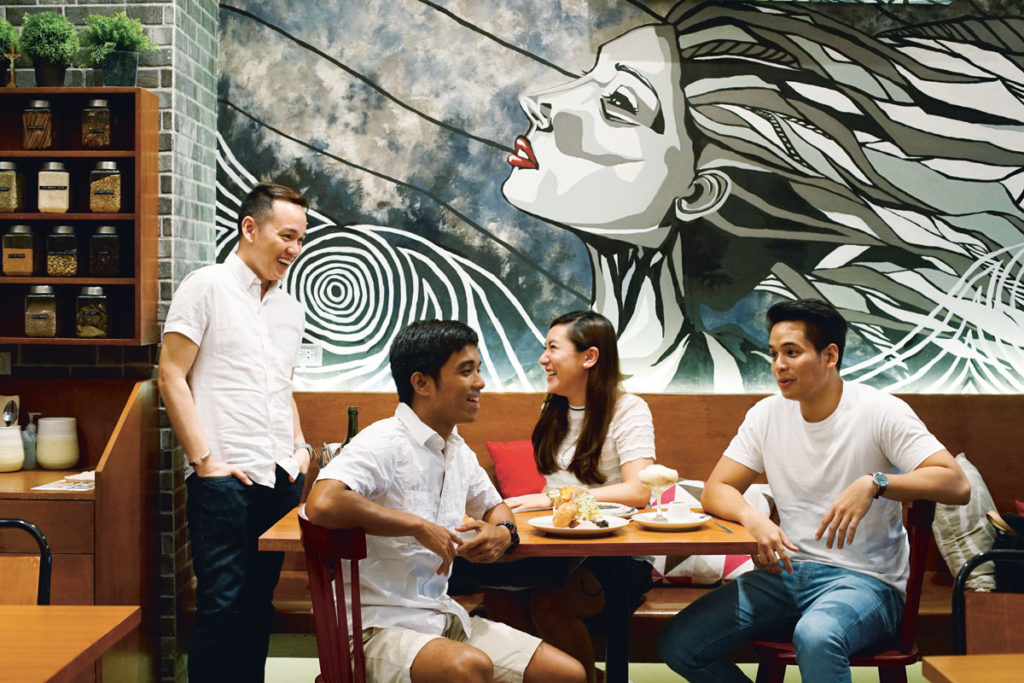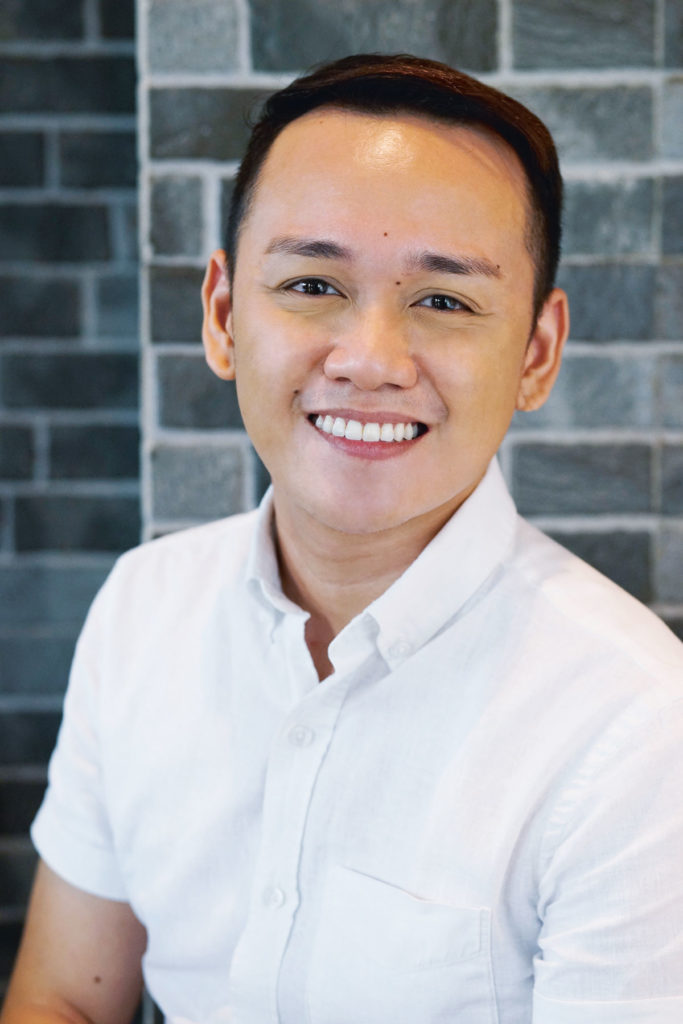Much has been written and said about Philippine cuisine as of late, and all the buzz and media attention have definitely revved up Filipinos, with pride and confidence perhaps at an all time high. Chef Jam Melchor appreciates the hype and is all for supporting it. In 2015, he founded the Philippine Culinary Heritage Movement (PCHM), which hopes to help get the word out on Filipino food as well as have it be seen and accepted as an art medium.
“Kasi kapag in-acknowledge nila that cooking is an art form or an art expression, magkakaroon ng distinction ang Filipino cuisine. And local chefs can now be recognized as national artists.” It’s a distinction that may take time and effort to achieve and is something the chef, with the help of many volunteers in the F&B industry, is ready and willing to work for.
What motivated you to start PCHM?
Jam Melchor (JM): From 2013 to 2015, I was commissioned by the Department of Agriculture to represent and cook for their ASEAN Roadshow Philippine Food Festival project. The remarkable feedback we got from each country and the affirmation from different people that our food is really worth something pushed the convenor in me to form a group of people who can selflessly work together to celebrate, preserve, and promote Filipino food further.
Your group is pretty young and still in its early stages. What are your most immediate concerns and goals?
Gino Jose (GJ): Since I am in charge of creating marketing and advertising materials through videography, my goal is to produce viral videos so we can establish our presence in the online community. Eventually, we would like to keep a video log of Filipino recipes, like a cooking show, and have presence on local and cable TV as well.
JM: I would like to sustain the movement. That’s my primary goal kasi mayroon kaming sariling mga buhay outside PCHM. Kailangan gumawa kami ng paraan to be self-sustaining, whether it’s regarding money, members, or events. Dapat the programs will continue to run with or without us. For that to happen, we need to have training and development, monetary support, anything that would support the continuity and longevity of the programs established by the group.
“Food is as much of an art and science as other things such as literature and medicine. It’s about time we further intensify the appreciation and awareness about our own culture.”
Jack Flaminiano (JF): I want for PCHM to be a program rather than a project. Apart from receiving support from the government, we should also be able to generate our own income since we are a separate entity.
Samantha Sales (SS): I want to bring awareness about PCHM to the locals first and then to the foreigners and tourists, sort of like a ripple effect. Our movement should be the brand ambassadors, so to speak, for Filipino food. My role is to create venues online where we can amplify the efforts of all the core members. Nowadays, everyone is online,and that’s the best, most economical, and fastest way to bring awareness about PCHM to the people, both here and abroad.
Forming an organization goes without any challenges. What have been some of yours?
SS: The struggle right now is internal, actually. There’s an introduction of the movement, but what are the actionable tasks? I need to be able to strengthen and solidify our goals so we can maximize our capital. In terms of help, I would like to appeal to all Filipino media outlets to help us amplify our reach and promote PCHM’s efforts.
GJ: I am the videographer and I am a one-man team. The job can be daunting at times. Because of budget constraints, we can’t hire additional employees to create videos and graphics needed to put PCHM’s presence out there. We also can’t pay for ads and airtime. If I were to appeal to anybody, it would be to all the local brands and all the local companies. If they could collaborate with us by co-advertising their materials with ours or the local networks giving us a few seconds of airtime, magazines and newspapers giving us space to run our ads, etc., the reach would go so much further than just online.
JF: The challenge is to build the PagkainPH brand [a PHCM initiative that supports and promotes Philippine produce] from the ground up. None of us do this for a living, so we want to create fundraising projects and events to make PCHM more sustainable. Since we are promoting Filipino heritage through its food, I hope government entities such as the Department of Tourism and Department of Agriculture could allocate funds for our programs.
JM: It is really my advocacy to get our cuisine recognized as an art medium. Dapat talaga partner and ally ng PCHM ang National Commission for Culture and the Arts (NCCA). With their support, our programs and projects will be highlighted and more than anything, be recognized as an art form so it would be easier to justify support for our efforts.
Your platforms all seem to hold so much promise. Tell us more about the programs you mentioned.
SS: I would like to see weekly events happening in different parts of the country, something like Wow Philippines, but it won’t be just in Manila. It will be celebrated all over, like a traveling weekend market. But these events will largely focus on highlighting the many different dishes and cuisines from different provinces in the country. The local food industry is very much alive, and rather than reading or watching shows about it, we want to strive for people to experience it.
GJ: The pitch that I have been working on, the one that I’ve been showing to potential sponsors and clients is a show, a short clip actually, called “Philippine Food Culture.” It’s a minute long and it introduces and explains what Filipino food is. We would like to expand this so the first thing I would do is to hire a production team and turn it into a documentary series.
JF: My main focus right now is really PagkainPH. If funding is made available, I would go to all the local farmers and source products from them to be able to support them. Our local farmers have so much to offer but oftentimes, they are taken for granted. Some are even taken advantage of. One of the goals of PCHM is to be able to provide 100 percent support to all Filipino farmers while promoting Filipino food, simply because everything we buy in the markets come from their farms and is harvested through their hard work.
JM: I would like to focus on building a solid foundation for PCHM, a legacy that we can leave behind. So I will concentrate on finding committed members who share the same goals and think of all the ways we can further promote our advocacy by bringing awareness to as many people as we can.
Chefs and restaurateurs can definitely help further your goals. But who else would you like to see working with PCHM?
JM: We have an amazing amount of accomplished and respected local talents. I am fortunate to share the same profession as these individuals. There’s nothing more I would want than to collaborate with all of them. However, PCHM is not just open to chefs. It’s open to everyone who shares the same vision and has the passion to work for free for the sake of our heritage. I am looking for someone who has initiative or kusa, someone who won’t give up so easily, and someone who really believes in our cause.
SS: I think someone with passion is key. The cause can be idealistic, the cause can be just a concept, but if we can make it more practical in terms of how we can help people, the Filipino farmers, and local businesses, it becomes more realistic.
Is it your job to consolidate all of the government and private sectors efforts to further people’s awareness and appreciation for our cuisine? Or just to add to them?
JM: PCHM’s role is to consolidate all of these efforts and work with different groups who share the same passion and love for Filipino cuisine. We don’t get paid to do this. We are not a marketing arm of any brand, but as advocates, we are to support any project that is for the preservation and cultivation of the Philippine culinary heritage.
You are rallying for the culinary arts to be recognized by the NCCA. Tell us more about this. And achieving this will do what exactly for the industry?
JF: Yes, getting the support of the NCCA is one of our key initiatives. We are striving for the recognition of Filipino cooking and culinary arts as an art form. The reason is that traditional cooking has always been passed on orally and we’re slowly losing some of these traditions. One of our goals with the NCCA is for traditional cooking to be included in their “Schools of Living Tradition” initiative. This initiative is an informal ‘school’ where a living master or culture bearer teaches the skills or techniques of doing a traditional art or craft to younger generations.
Share with us your upcoming project and collaboration in the US. How did that come about?
JM: I have always believed that with unity, there is victory. I am glad that I was able to connect with the Filipino Food Movement in the US, headed by PJ Quesada, in order to align our goals for both organizations here and abroad, since we are both bound by the common goal to promote and make Filipino food mainstream.
This year, they will be doing another leg of Savor Filipino, the biggest Pinoy food festival in the US, in October. Together with some PCHM members, we will be flying there to celebrate with our kababayans.
Originally published in F&B Report Vol. 13 No. 4



